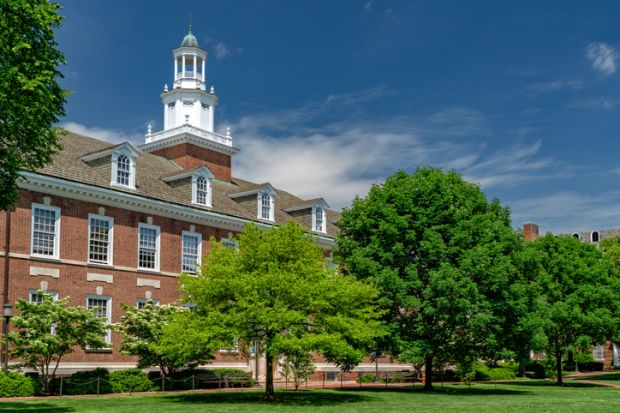U.S. universities in India and Gulf are no longer just a future dream they are a rising reality. In recent years, several top American universities have launched or announced campuses in India, the UAE, and other Gulf nations. The move represents a powerful shift in global education, aiming to provide high-quality academic programs in regions with growing demand.
Why are these universities expanding abroad? What are the benefits for students, institutions, and host countries? Let’s explore the strong reasons behind this educational revolution.
Meeting Rising Demand for Quality Education
The demand for world-class education in India and Gulf nations is increasing rapidly. Millions of students are now seeking globally recognized degrees without having to travel to the U.S.
In India alone, the number of college-going students is expected to cross 140 million by 2035. Similarly, the Gulf nations like UAE, Qatar, and Saudi Arabia are investing heavily in education. U.S. universities want to tap into this growing market by offering trusted degrees right where students live.
Opening campuses in these regions means universities can meet demand locally and reduce barriers such as visa issues, relocation stress, and high living costs in the U.S.
Expanding Global Influence and Brand Value
Having physical campuses in India and the Gulf increases the global reach of American universities. Institutions like Harvard, Stanford, and NYU are not just academic centers they are global brands. Expanding to international locations boosts their brand value and global presence.
This move helps U.S. universities reach more students, build stronger alumni networks, and create collaborations with local industries. It also gives them a competitive edge in the global education market, where institutions from the UK, Australia, and Canada are also expanding.

Partnerships with Local Governments and Institutions
One of the main reasons U.S. universities in India and Gulf are increasing is due to favorable partnerships with local governments. For example, the Indian government introduced new education policies to allow foreign universities to operate independently in special zones like GIFT City in Gujarat.
In the Gulf, countries like UAE and Qatar are offering attractive financial incentives, infrastructure support, and legal frameworks to attract international education giants. These partnerships create win-win situations: American universities get access to a new market, and host countries gain prestige and educational excellence.
Lower Operational Costs and Higher Reach
Running a university in the U.S. can be extremely expensive due to high infrastructure, labor, and administrative costs. However, opening campuses in India or the Gulf can be more cost-effective. Real estate, salaries, and services are often cheaper, allowing institutions to operate at a lower budget.
This cost benefit allows universities to offer affordable tuition rates, which can attract a larger pool of students. Also, universities can scale programs more efficiently by using online and hybrid education models alongside physical campuses.
Boosting Research and Innovation Collaboration
By establishing campuses abroad, U.S. universities are not only spreading education—they are also building new research ecosystems. Collaborating with Indian tech hubs or Gulf innovation centers gives them access to diverse research talent, local data, and real-world challenges.
Many universities are setting up advanced research labs, entrepreneurship centers, and technology parks in collaboration with local industries. This fosters cross-border innovation and allows the institutions to participate in solving regional problems, while students and faculty gain hands-on experience.
Catering to Diaspora and International Students
There’s a large population of Indian and Middle Eastern students who dream of studying in the U.S. but face issues like high tuition fees, cultural shock, or visa delays. For them, studying in U.S. universities in India and Gulf offers a perfect middle ground.
They can now earn an American degree while staying closer to home. This is also helpful for working professionals who want to upskill but cannot leave their families or jobs. Such campuses offer flexibility, global exposure, and quality all under one roof.
Aligning with Geopolitical and Economic Shifts
The global center of economic power is gradually shifting toward Asia and the Middle East. With rising investments, booming startups, and growing middle-class populations, countries like India and UAE are becoming strategic partners for the U.S.
U.S. universities recognise this shift and want to stay ahead of the curve. By expanding into these regions, they align with the long-term geopolitical and economic trends. This also strengthens U.S. soft power and diplomacy through educational and cultural exchange.
What U.S. Universities Are Already in India and the Gulf?
Several prestigious institutions have already taken the leap:
- New York University (NYU) established a full-fledged campus in Abu Dhabi and another in Shanghai.
- University of Chicago has a center in Delhi.
- Cornell University has collaborations in Qatar and India.
- Georgetown University, Carnegie Mellon, and Northwestern have campuses in Education City, Qatar.
- Arizona State University and University of Wollongong are now entering Indian zones like GIFT City.
India’s new policy also allows foreign universities to set their own fee structures, hiring rules, and curriculum design attracting many more top U.S. universities in the coming years.
Challenges and Criticism
While the expansion sounds promising, it also comes with certain challenges.
Maintaining quality is one concern. There’s a risk that the foreign branches might not offer the same academic standards or reputation as the main campus. Regulatory issues are another factor. Some countries still have strict education laws and complex approval processes.
Cultural adaptation is also critical. U.S. universities must learn to align their teaching methods and campus cultures with local expectations to succeed. However, most universities are aware of these issues and are working with local experts to ensure smooth implementation.

Impact on Local Education Systems
The presence of U.S. universities in India and Gulf can also impact domestic institutions. Some worry that this might increase competition and affect the growth of local colleges.
However, many experts believe it will actually improve the overall quality of education. Local institutions may adopt international standards, focus more on research, and collaborate with foreign campuses for dual degrees and exchange programs.
In the long run, students will have more options and better learning experiences.
Final Thoughts: A Global Learning Movement
The world of education is evolving fast, and U.S. universities in India and Gulf are leading this transformation. By bridging cultures, removing borders, and offering quality education locally, they are creating a win for students, economies, and global knowledge sharing.
This expansion reflects more than just academic growth it symbolises a future where education truly becomes a global right, not just a privilege tied to geography.
As more universities join this trend, students can expect better opportunities without needing to leave their countries. And that’s a powerful change the world needs right now.
Do follow Gulf Magazine on Instagram
Also Read – CambriLearn Dual Curriculum UAE A Game-Changing Option



